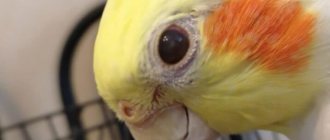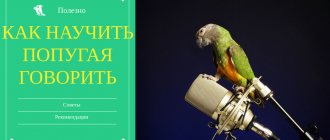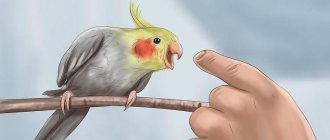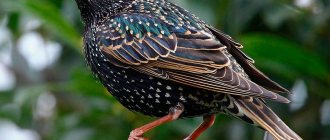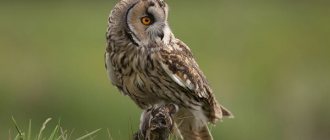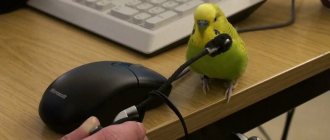Home » Other animals
Parrots occupy an important place among pets. They require special conditions of detention; communication with them is radically different from contact with other animals. But the main nuance is the ability of most breeds to imitate sounds. A cockatiel parrot can be taught not only melodies or whistles, but also human speech, which will make being with a colorful pet even more exciting.
- 2 How to teach a cockatiel parrot to talk and sing
- 3 Training programs
- 4 Video: how to teach a cockatiel parrot to talk
Features and abilities of Corella parrots
The attractive appearance of the Australian bird contributed to the fact that the parrot received a second name - nymph. But beauty is far from the only advantage.
The owners include the following as the advantages of the species:
- Fast adaptation. The parrot quickly adapts to new living conditions and begins to behave at ease and freely.
- Ability to learn. With regular training, the cockatiel dances and sings, learns to reproduce the simplest words, and imitate all kinds of sounds.
- High life expectancy. In the wild, reaching 10 years of age is already a good indicator for this bird. At home, life expectancy almost doubles - some individuals live up to 25 years.
Species features:
- weight about one hundred grams;
- wingspan within 18 cm;
- body length (with tail) – 30 cm (+- 3 cm);
- The color of the body is gray, the head is yellow with bright orange cheeks, white inserts are noticeable on the wings. Males are slightly brighter colored than females.
The color described above is observed in birds in nature. In reality, there are many mutations specifically bred by humans to give a pet a decorative appearance.
What you need to know before starting training
Corella parrots belong to the cockatoo family, they come from Australia, where they have another name - nymphs. These small birds (their body length reaches 30–33 cm, about half of which is the tail) love communication, therefore they respond well to human company and are easy to train. One of the most interesting abilities is the ability to imitate sounds so accurately that they can even speak clearly. Cockatiels are often turned on precisely because of the capabilities of their voice. Unlike other breeds of birds, they produce more melodic and pleasant sounds.
Corella parrots are often kept because of their ability to learn.
The learning outcomes largely depend on the individual; important factors are:
- Floor. Male cockatiels, for the most part, learn sounds easier and faster. Many even believe that females cannot talk at all, but this is not true, it just requires more effort and patience. At the same time, you need to remember that gender is not a death sentence, because there are both silent males and extremely talkative females. There are no special techniques for training girls, it just may take more time.
- Age. The older the bird, the more difficult it will be to teach it to sing and talk. Young individuals aged 2–3 months are most prone to imitating sounds. When training an adult bird, you will have to wait quite a long time for results.
The possibilities of a bird are not limitless. Corella will be able to remember a maximum of 25–30 words and several sentences using them (but no more than 3–4 members). The pet will be able to play several melodies, perhaps he will even pronounce individual words or lines from a song.
You need to understand that a parrot can only reproduce memorized combinations of sounds; it does not conduct a conscious conversation with a person. Owners usually teach the bird phrases from a specific dialogue, and then plays it back - this gives the impression that they are communicating.
The period of training before obtaining the first results is also individual, it depends both on the bird itself and on the efforts of its owner. If you practice persistently and according to the rules, then after 10–14 days you will be able to hear a clear word from the smart parrot. There are no ways to train a pet in either 5 or 20 minutes, since memorization requires systematic repetition.
Why does the cockatiel sing and dance?
Corella, like most other parrot species, is prone to imitation. Initially, singing is a way to communicate with others, including the owner. In nature, birds sing magnificently, but in an apartment with birds you need to work hard to hear the inimitable sounds.
At first, the parrot may make incoherent, high-pitched sounds, whistling or chirping. Under good conditions of detention, positive and regular communication with the owner, the range of vocal capabilities will invariably expand.
A dancing bird is not such a common occurrence, but your feathered friend can easily learn rhythmic movements if you constantly turn on catchy melodies and dance to them. A parrot is able to imitate not only sounds, but also human movements.
Amazing abilities
Like all birds, cockatiels make a variety of sounds, from whistling to singing. Every cry or song means something. With some exclamations, the parrot may demand to be fed, let out of the cage, or simply to pay attention to it.
Long, high-pitched sounds can tell you that something is bothering your pet. For example, fear or a painful condition. In this case, you must rush to his aid. In the article “Character of the Corella Parrot” we looked at this behavior of the bird.
The first musical abilities of a pet are manifested in its chirping and chirping. Such sounds indicate both the parrot’s desires and a good mood. Perhaps the bird is happy about your arrival, free flight around the room, or its favorite treat.
Sometimes the onomatopoeia of parrots can confuse the owner. When they imitate the ringing of an alarm clock, the ringing tone of a mobile phone or the doorbell, the owner does not immediately understand that this is a kind of bird prank.
Cockatiel nymphs sing when they experience bright feelings and pleasant sensations. But if you do not pay enough attention to your pet, it is unlikely that he will want to open up so much that he will sing freely and regularly. Only a loving and caring owner deserves to hear his joyful and happy songs. If cockatiels sing, then you are a good owner.
How the Corella parrot sings
Parrots of this species have a powerful voice. The sounds that can be heard from them are varied. Chicks sing songs from the age of two months, but adults reach the peak of their “career” at about two years. In general, the period when the cockatiel begins to sing is individual.
According to statistics, males most often sing and imitate human speech. But the females cannot be discounted; among them there are also very artistic individuals.
Whatever the sex of the pet, those who want to instill singing skills in their parrot should acquire a chick, not an adult. A bird with established habits is almost impossible to re-educate and teach anything.
Male cockatiel singing
Males of this species are indeed more vocal; the range of sounds available to them is extremely wide. Teaching a boy to imitate is much easier. Their musical abilities appear much earlier than in females and develop faster.
People who love silence are better off choosing a female parrot. Sometimes a male cockatiel sings and chatters incessantly, which not everyone will like. The male becomes especially “talkative” during the mating season. If we talk about the time of day, the male’s cry is heard most often in the morning.
How a female cockatiel sings
Females are more restrained in their emotions: their singing is a set of monotonous, not very expressive sounds. The “vocals” of females are uncomplicated and simple; even the most notorious singers give concerts much less often than males. The singing of a female cockatiel during the mating season is also not particularly passionate.
If you want to achieve great success in music, dancing and speaking skills from your feathered pet, it is better to buy a male. There is an opinion that female cockatiels are generally unteachable, but this is not true. It’s just that learning is more difficult for them, which means they will have to spend more effort to hear how the parrot imitates sounds and music.
How old do cockatiels grow?
Cockatiel chicks are born weighing only a few grams, but they grow literally “by the hour.” Increased growth occurs in the first month of life. Next, the bird acquires a large amount of fluff and feathers, and one gets the impression that it is growing. But this is an illusion created by the increasing volume. By the year the bird gains normal weight, on average 80 g, and the length of its body by this time is 30 cm including the tail. Sexual maturity occurs in males at 9 months, in females - a little later.
It is difficult for an inexperienced owner to determine what age a parrot has reached. This task is much easier for breeders for whom raising parrots is part of their life. But even professionals find it difficult to answer how old an adult cockatiel is, accurate to the nearest year.
How to teach a cockatiel to sing and dance
Any bird will sing and behave relaxed in the house where it is cozy and comfortable. Therefore, it is not enough just to regularly spend time near the cage with your pet, indulging in pleasant conversations; proper care is also necessary.
How to care for a parrot so that it learns to sing
This bird is a capricious pet that requires increased attention. Especially when it comes to parrots. Cockatiels singing in the wild is a common occurrence. And in order for this to happen in an environment alien to the bird, the following must be ensured:
- Good lighting. The sun's rays have a beneficial effect on any living organism. The parrot's cage should not be in a dark corner.
- Cleaning the “room”. The cage where the birds live needs to be cleaned regularly, ridding it of debris and waste.
- Air temperature. Guests from hot countries are sensitive to the cold; a freezing bird has no time for songs. The minimum required temperature that should be in the room is +20°C.
- Humidity. The room should not have either too dry or too humid air.
- Drafts. It is necessary to exclude the situation with drafts: cockatiels, when overcooled, lose their voice.
When to start studying
The new inhabitant of the apartment experiences stress at first; in the first days he is not ready to communicate with people. A cockatiel can spend most of its time huddled in the corner of its cage. You should not start training the bird during this period, as conversations will be meaningless and may even scare away the owner. To facilitate the adaptation process and help your pet cope with fear, you need to make some efforts:
- provide comfortable conditions and maintenance in a separate home;
- Do not clean the cage for a week and generally do not disturb the bird once again;
- do not make noise in the room where the cockatiel lives, observe the day and night regime;
- You cannot let the bird out of the cage and force it out.
As a rule, after two weeks the cockatiel gets used to the new owner, and now she can be allowed to go for walks. A friendly parrot will eventually become so comfortable that it will sit on the breeder's shoulder or wrist. Consider that contact has been established and access to training is open. Next, teaching your cockatiel to speak will be much easier. The parrot, ready to communicate, flaps its wings, clicks its beak, and looks into the eyes of its owner. These moments should not be missed; such time is the most productive for learning.
Songs and music for cockatiels
Songs for cockatiels are selected individually. Birds react differently to unfamiliar sounds. Some works arouse keen interest in them, while others can even frighten them.
Studies have shown that parrots do not perceive modern music in the style of techno and electro. Classical compositions, especially with the piano, have a calming effect on them, but do not make them want to dance. We need something perky and rhythmic. An artistic whistle is a good choice for a cockatiel.
In general, you need to monitor your pet’s behavior: the parrot will immediately let you know which songs he likes and which ones he dislikes.
How many words can a cockatiel say?
The vocabulary available to a bird depends on its personal abilities. Talented individuals memorize several dozen words and even reproduce the lyrics of songs. You shouldn’t expect a meaningful dialogue from a cockatiel: it hears a familiar word from a person’s mouth and pronounces it with the same intonation, that is, it copies it. Regular lessons have a good effect on the result; the bird does not have time to forget the learned phrases.
To increase the number of words your cockatiel speaks, follow these guidelines:
- connect words with actions. When cleaning the cage, say “the bird is clean” or “Gosha is neat”, the parrot will remember this and repeat it while cleaning. When entering a room, say “bonjour”, and when leaving, say “ciao”;
- parrots are good at hissing and rumbling sounds - “k”, “t”, “ch”, “p”, “r”. The vowels should be long - “a”, “o”, “i”, “e”. The optimal word length does not exceed six letters;
- speak slowly, clearly and loudly, do not change intonation for individual words. Slurred pronunciation will prevent the parrot from catching and transmitting the correct sequence of sounds;
- Offer to learn a new word when the cockatiel parrot speaks the previous one clearly. Reinforce the material covered at the beginning of each lesson.
The presence of a talking parrot in the house encourages residents to keep track of their vocabulary. An intelligent bird, although incapable of understanding the meaning of words, easily grasps swear words. Then it will be awkward in front of the guests.
Cockatiel Nymph Sound Dictionary
A bird living at home, even if it cannot speak, has a wide range of various vocal techniques. Listening to the sounds of Corella parrots, it is easy to understand what mood the pet is in and what worries him.
Here's what a short dictionary of the cockatiel's “language” looks like:
- Corella chirps loudly and intensely - the pet is scared and sounds an alarm. The cause may be a sharp sound or unexpected movement.
- The non-stop, long chirping of a parrot indicates that the bird is bored, thirsty for communication, or ready to mate.
- The pet usually makes sounds similar to hissing in the first days of being in a new place. This is a sign of anxiety, fear.
- The grinding of its beak indicates that the pet is getting ready to sleep.
- The parrot screams and squeals when there is too much noise around its home. Also, the reason for this behavior may be the bird’s reluctance to remain alone, unfavorable environmental factors, or lack of sleep. The cry of a cockatiel in the morning is a natural phenomenon: the bird has woken up and notifies household members about it.
- Cockatiel parrot songs and whistles mean that the pet is in a good mood.
Corella parrots are sociable, friendly, affectionate and smart. Listening to them sing and chirp is a real pleasure. These pets are able to fill any room with positive energy and turn every day into a holiday with their joyful chirping.
If you regularly play this video for your pet cockatiel, after a short time he will begin to play a very melodic and beautiful melody:
